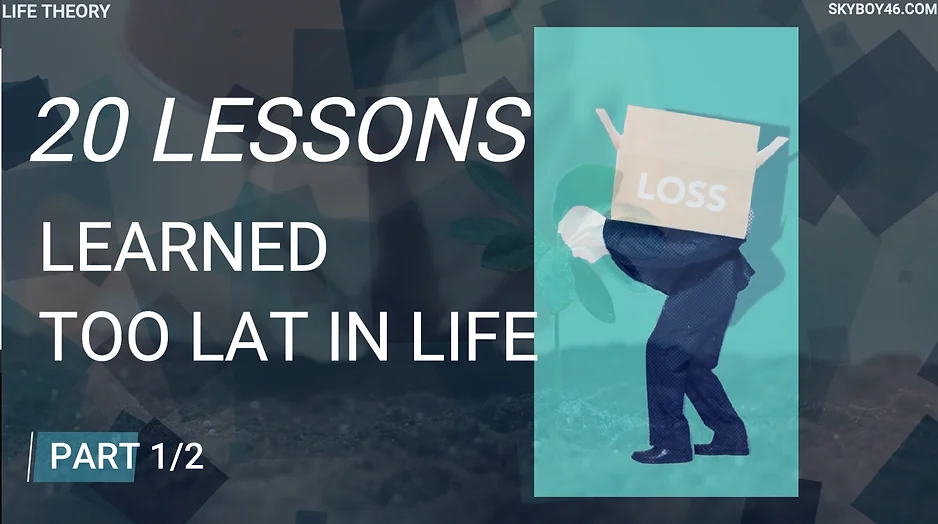What if the key to financial freedom is paying yourself first? Explore the simple yet powerful strategy of prioritizing savings before anything else. Learn how to automate your savings, set realistic goals, and build a future where financial stress is a thing of the past. Ready to take control of your money and your life?
SUBSCRIBE: https://www.youtube.com/@LifeTheory46
VISIT: https://linktr.ee/lifetheory46
Get You Monthly Life Stories in Advance & Our Premium Learning Packs HERE:
Prioritizing Your Future: The Strategy of Paying Yourself First
Today’s focus is practical, offering a straightforward approach to improving your financial life: the strategy of paying yourself first. This method isn’t just about numbers; it’s about reshaping the way you think about your money and, by extension, your future. It begins with the mindset that, before any other expenses, you’re investing in your own financial well-being. Here’s how to make it happen and why it matters.
Paying yourself first is a key principle in personal finance where you allocate a set amount from each paycheck directly into savings or investments as soon as it hits your bank account. The goal is to make saving a habit by prioritizing it over expenses, debts, or lifestyle spending. Think of it as setting aside money for your future before handling anything else. This ensures that saving isn’t an afterthought but a foundation for long-term financial health.
But how do you do it effectively? Let’s break down the steps to build a system that works for your unique situation.
The first step is understanding your financial baseline: what comes in and what goes out each month. Take a close look at your income and expenses over the past few months to get an accurate picture of your spending patterns. Start by listing the essentials—rent or mortgage, groceries, utility bills, and any loan payments. Once you know your minimum monthly needs, you’ll be better equipped to decide how much you can realistically save.
Setting your savings target is the next move. While 20% of your income is often recommended, start with whatever amount feels manageable for you. Let’s say you’re earning $3,000 monthly and your essential expenses add up to $1,400. That leaves $1,600 to work with. You could aim to save $600 each month—20% of your income—or even push it higher if you’re comfortable adjusting some discretionary spending. The goal isn’t just to save a specific amount but to find a savings rate that aligns with your lifestyle and financial goals.
Now that you’ve settled on a savings target, it’s time to decide where that money should go. Think about your goals in terms of short, medium, and long-term needs. Perhaps your short-term aim is building an emergency fund, while the medium-term could involve saving for a home, and the long-term target might be retirement. By categorizing your savings this way, you can create a more structured approach that serves various aspects of your financial life.
Once you’ve mapped out your plan, it’s time to put it into action. The easiest way to make saving seamless is to automate transfers from your checking account to your savings or investment accounts. Setting up automatic transfers eliminates the temptation to spend the money elsewhere and ensures that your savings grow consistently over time. With this system in place, you’re no longer relying on willpower; the process becomes automatic.
But as with any strategy, there are pros and cons to paying yourself first. While it’s generally a smart move, there are situations where it might not be the most beneficial choice. For example, if you’re dealing with high-interest debt, such as credit card balances, tackling that first could save you more in the long run than you’d earn from most investments. The key is to weigh your circumstances and make adjustments as needed.
Why is prioritizing savings so crucial? Imagine focusing all your extra cash on paying down your mortgage, only for an unexpected expense—say, a costly home repair—to arise. Without an emergency fund, you could end up in debt again, this time with high-interest credit card charges. Paying yourself first isn’t just about preparing for emergencies; it’s also about being ready for opportunities. Consistently contributing to a growth-oriented investment can yield significant returns over time, setting you up for long-term success.
Ultimately, the money you save today isn’t just sitting idle—it’s working for you, growing steadily, and preparing you for the future. Start by updating your budget and examining your spending patterns. Decide how much you can comfortably put away each month and stick to it, adjusting as your circumstances change. Whether you’re focusing on immediate needs or far-off goals, make paying yourself first a habit that reinforces your commitment to financial freedom.
Take the time to revisit your budget now and figure out where you can make room for that vital savings contribution. It’s not just about the money; it’s about investing in a future where your financial security is a given, not a gamble.
–> Read More Life Stories Here:
https://www.lifetheory.us
https://www.lifetheory.eu
Buy all of our Life Stories & Our Premium Learning Packs. Listen or Read to them anytime you want. Have them Forever.
You can get each monthly lesson on our website at https://www.skyboy46.com/store
SHARE THIS STORY
Visit Our Store
SHOP NOW
www.skyboy46.com & www.myskypet.com
Designed For Pet Lovers & Introverted Souls
Sport, Hobbies, Motivation, Music & Art






~EXPLORE MORE~
www.linktr.ee/skyboy46


